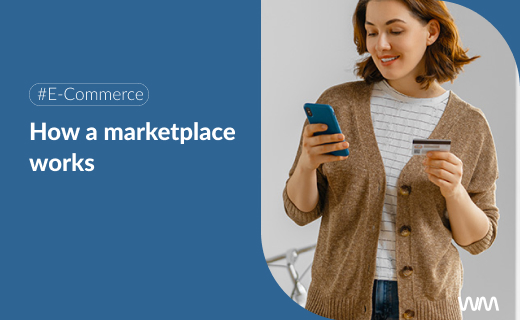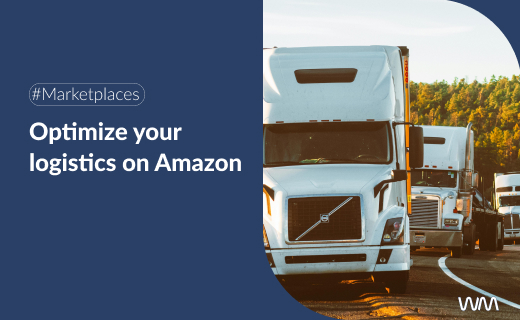Marketplace: Evolution and Payment Solutions
The concept of marketplaces dates back to ancient Roman markets, medieval fairs, and modern shopping centers. Essentially, they represent multiple stores in one location. Technology has transformed relationships and consumption, creating new business models. Marketplaces can be seen as an evolution of e-commerce—a “collaborative e-commerce.”
Marketplaces have been rising since the 90s, starting with eBay (1995). Today, 7 out of 10 online purchases occur on a marketplace, accounting for more than half of online sales.
These online platforms aggregate various sellers or brands aiming to reach a large number of buyers, offering opportunities for entrepreneurs, digital-only businesses, and new brands.
In this blog, we’ll explore what marketplaces are, their evolution over the years, and their advantages. Keep reading to gain a deep understanding of marketplaces.
What is a Marketplace?
Amazon, AliExpress, eBay, El Corte Inglés, and Fnac are well-known internationally and nationally as marketplaces. This digital business model consistently boosts sales year after year.
These “online markets” bring together a range of sellers (large, medium, and small businesses) who list their products or services on a website. For example, PC Componentes.
The platform allows these brands to reach thousands or millions of people, earning a small commission from each sale.
There are two types of marketplaces: those with a wide range of products across various categories (e.g., AliExpress) and those specializing in a specific category (e.g., Decathlon). Marketplaces consist of three main actors:
- Sellers (businesses and brands) are the “partners” who offer products/services and manage logistics.
- Platform (marketplace) is the “manager,” handling access, cash flows, advertising, communication, features, and metrics.
- Customers are the “buyers,” responsible for purchasing.
Marketplace Buyers
Recent studies show that 47% of people aged 16-47 make a purchase every three months, with the most active age group being 25 to 34. In Spain, there are 25.8 million online buyers. While we lag behind the European average, our average ticket size and subscription programs (e.g., Amazon Prime) are growing.
Popular categories include: home goods, electronics, clothing and footwear, and computing.
From the consumer’s perspective, a marketplace is a single place to find diverse products and brands at competitive prices. Each pillar benefits uniquely from marketplaces.
Advantages of Marketplaces
For customers:
- Wide Product Range: A vast selection of products and services in one location.
- Increased Satisfaction: More options can meet diverse needs.
- Product Comparison: Ability to compare products by price and features.
- Ease and Security: Multiple payment methods and secure payment options enhance convenience and safety.
For businesses:
- Broader Audience: Access to a wider target market.
- Increased Sales: Potential to boost sales.
- Brand Visibility: Enhances visibility, especially for smaller or new companies. Some marketplaces offer paid advertising options to highlight products.
- Consumer Trust: 67% of users trust the marketplace even if they don’t know the seller.
- Internationalization: Reach customers from other countries.
- Low Cost: Generally involves lower financial risk.
- Related Purchases: Products may appear as recommendations, increasing visibility.
- Performance Tracking: Easier to measure and evaluate brand and product performance.
- Transparency: Uses escrow accounts for safe handling of funds, reducing the risk of fraud.
For the platform:
- Scalability: Connecting thousands of brands with potential customers creates a virtually limitless business model. Although it requires substantial infrastructure, it remains cost-effective.
- Commission Revenue: Earns from each sale through commissions. The revenue is split between the platform and marketplace based on pre-established terms (e.g., 70-30, 50-50). These are known as Split Payments, ideal for B2B and digital businesses. They automate, assign, and transfer funds securely and easily.
Marketplaces are perfect for gaining visibility, increasing sales, finding customers with minimal investment, and building consumer trust.
How Split Payments Work in a Marketplace
Online buyers consider several factors: price, product quality, offers or discounts, variety, and the ease and security of payment. A payment platform is crucial not only for customers but also for sellers who need clarity on how, how much, and when they will be paid.
Wannme acts as an all-in-one marketplace solution. Our single API addresses the needs of both customers and sellers with customized online payment solutions. We combine and personalize the best features of the market, offering functionalities like Split Payments and escrow accounts for marketplace management.
Discover how Wannme can benefit your marketplace.
Stay tuned to our LinkedIn for more information!






